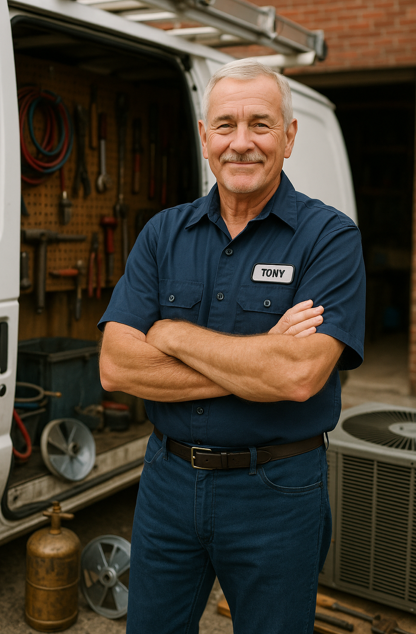When the summer heat hits, the last thing you want is to be stuck in a sweltering home. A reliable air conditioning system is essential for maintaining comfort and indoor air quality. Among the various options available, a 3-ton air conditioning unit stands out as a popular choice for many homeowners. But what exactly does "3-ton" mean, and how does it translate into your cooling needs and costs?
What Is a 3-Ton Air Conditioning Unit?
In the HVAC world, the term "ton" refers to the unit's cooling capacity, not its weight. Specifically, a 3-ton air conditioning unit can remove 36,000 British Thermal Units (BTUs) of heat per hour from your home. This capacity is typically sufficient for cooling spaces ranging from 1,500 to 2,100 square feet, depending on factors like insulation, ceiling height, and local climate conditions.
Understanding the Components of a 3-Ton AC System
A complete 3-ton air conditioning system usually includes:
-
Condenser Unit: The outdoor component that releases the absorbed heat.
-
Evaporator Coil: Located inside the home, it absorbs heat from the indoor air.
-
Air Handler or Furnace: Distributes the cooled air throughout the home.
-
Refrigerant Lines: Transport refrigerant between the indoor and outdoor units.
Factors Influencing the Cost of a 3-Ton AC Unit
The price of a 3-ton air conditioning system can vary widely based on several factors:
-
Brand and Model: Premium brands like Carrier or Trane may cost more upfront but can offer better efficiency and longevity. Check out this blog by The Furnace Outlet that compares these brands.
-
SEER Rating: The Seasonal Energy Efficiency Ratio (SEER) indicates the unit's efficiency. Higher SEER ratings typically mean lower operating costs.
-
Installation Complexity: Factors like ductwork modifications, electrical upgrades, and accessibility can affect installation costs.
-
Location: Regional labor rates and local climate can influence both equipment and installation prices.
Average Costs for a 3-Ton AC System
Based on recent data:
-
Equipment Only: Prices range from $2,000 to $3,600 for the unit alone.
-
Installed Systems: Including labor and additional components, costs typically fall between $4,000 and $7,100.
-
High-End Systems: Premium systems with advanced features can exceed $15,000.
It's essential to obtain multiple quotes from reputable HVAC contractors to ensure competitive pricing and quality installation. To explore AC costs, check out this article by Angi.
Comparing 3-Ton AC Units with Other Sizes
Choosing the right size AC unit is crucial for efficiency and comfort. Here's a brief comparison:
| Unit Size | Cooling Capacity (BTUs) | Ideal Home Size (sq ft) | Average Installed Cost |
|---|---|---|---|
| 1.5 Ton | 18,000 | 600–900 | $3,500–$6,500 |
| 2 Ton | 24,000 | 900–1,200 | $3,600–$6,700 |
| 2.5 Ton | 30,000 | 1,200–1,500 | $3,800–$6,900 |
| 3 Ton | 36,000 | 1,500–1,800 | $4,000–$7,100 |
| 3.5 Ton | 42,000 | 1,800–2,100 | $4,200–$7,300 |
| 4 Ton | 48,000 | 2,100–2,400 | $5,000–$7,500 |
| 5 Ton | 60,000 | 2,400–3,000 | $5,500–$8,000+ |
Note: These are average figures and can vary based on brand, features, and regional factors.
Energy Efficiency and SEER Ratings
The SEER rating measures an air conditioner's cooling output during a typical cooling-season divided by the total electric energy input during the same period. Higher SEER ratings indicate better energy efficiency. For instance:
-
14.5 SEER2: Standard efficiency.
-
15.2 SEER2: Above-average efficiency.
-
19 SEER2: High efficiency, leading to lower energy bills.
Investing in a higher SEER-rated unit can result in significant savings over time, especially in regions with long cooling seasons.
Installation Considerations
Proper installation is vital for the optimal performance of your 3-ton AC system. Consider the following:
-
Ductwork: Ensure existing ducts are compatible and in good condition. Leaky or undersized ducts can reduce efficiency.
-
Electrical Requirements: Verify that your home's electrical system can handle the new unit's demands.
-
Location: The outdoor condenser unit should be placed in a shaded area with adequate airflow to enhance efficiency.
Hiring a licensed and experienced HVAC professional is crucial to ensure proper installation and avoid potential issues.
Maintenance Tips for Longevity
To maximize the lifespan and efficiency of your 3-ton air conditioning system:
-
Regular Filter Replacement: Change filters every 1–3 months to maintain airflow and air quality.
-
Annual Professional Maintenance: Schedule a yearly tune-up to inspect and clean components.
-
Clear Surroundings: Keep the area around the outdoor unit free from debris and vegetation.
-
Monitor Performance: Be attentive to unusual noises, reduced airflow, or inconsistent temperatures, and address issues promptly.
For more tips on AC maintenance, check out Energy Star.
Conclusion
A 3-ton air conditioning system is a robust choice for homeowners seeking reliable and efficient cooling for medium to large-sized homes. By understanding the factors that influence costs, efficiency ratings, and installation requirements, you can make an informed decision that ensures comfort and value for years to come.
If you're considering upgrading or replacing your current system, it's advisable to consult with a licensed HVAC professional to assess your specific needs and obtain tailored recommendations. Also, consider the options provided by The Furnace Outlet.







